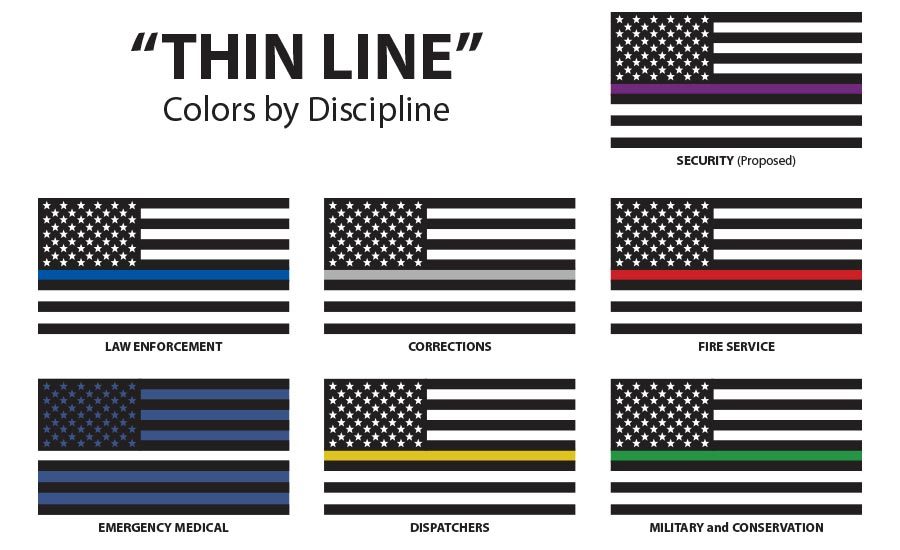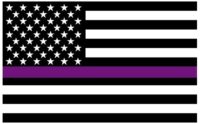One of the most common and recognizable symbols for law enforcement support is the “Thin Blue Line.”
The “Thin Blue Line” American flag represents law enforcement and is flown to show support for the men and women who put their lives on the line every day to protect America and its citizens. The symbol is used by the law enforcement profession and the public alike and has come to symbolize the relationship law enforcement has in the communities as the protectors of fellow civilians. Not only do they protect from criminal elements and disasters, but they also provide assistance to those in need such as someone who may become stranded on the side of a roadway as they are going about living their lives. The “Thin Blue Line” is also used by law enforcement and others to memorialize those law enforcement officers who have been killed in the line of duty.
Even more, the phrase “The Thin Blue Line” is synonymous with “The Police” and “Law Enforcement” and can be used interchangeably. It is the “Line” in “Line of Duty.” In visual terms, it is found in one of two variations. The first is a centered blue line with black space above and below it. The second, as a single blue stripe on an otherwise black and white, American flag, located just below the stars.
The “Thin Red Line” is used by the firefighting community to show support for firefighters as well as to memorialize firefighters who are killed in the line of duty. The “Thin White Line” represents Emergency Medical Services and the “Thin Gold Line” represents Communications Operators (dispatchers). The “Thin Green Line” represents Federal Agents such as Border Patrol, Park Rangers, Game Wardens and Conservation Personnel whereas the “Thin Silver Line” represents Corrections Officers.
But how is the security profession, both public and private, symbolized? At present, security professionals don’t have their own “Thin Line” color. That may be changing.
According to Tom Conley of The Conley Group, who has been a long-time supporter of skilled, well-trained and highly compensated security officers: “Security personnel in the public and private sectors form an essential part of the protective apparatus of most nations. Globally, there are an estimated 20 million private security workers. In the United States, the U.S. Department of Labor statistics states there are more than 1.1 million private security guards in the U.S. compared to 666,000 police officers. More importantly is this number only reflects those security personnel who are employed in the private sector. Add to this the tens of thousands of security personnel who are employees of the U.S. government, and it becomes clear that security personnel in the United States alone outnumber their law enforcement counterparts by nearly two to one. Law enforcement is not alone in its numbers being fewer than security. According to the NFPA, there are 1,160,450 local firefighters in the U.S. Of the total number of firefighters 345,600 (30%) were career firefighters and 814,850 (70%) were volunteer firefighters. What these numbers demonstrate is security personnel in the private and public sectors are a major force in protecting people, property and information. Because security personnel are a key part of the protection system, they too deserve to have their own ‘Thin Line’ color.”
The ASIS Law Enforcement Liaison Council (LELC) voted on July 11, 2018, unanimously to recommend the color purple (Velvet Purple [Pantone 2612]) be adopted as the official “Thin Line” color for the security profession.
Conley notes that “The LELC Chair will forward this matter to the ASIS Board of Directors with the strong recommendation that they support this initiative and vote to adopt this proposal.” The Board of Directors for the International Foundation for Protection Officers recently adopted the proposal.
Conley has written a white paper, “The Case for the Thin Purple Line,” that outlines the issue and offers reasons why the proposal should be adopted by the security industry at large. View Tom Conley’s white paper, “A Case for the Thin Purple Line,” here. Please contact me if you’d like more information,
ritcheyd@bnpmedia.com.




